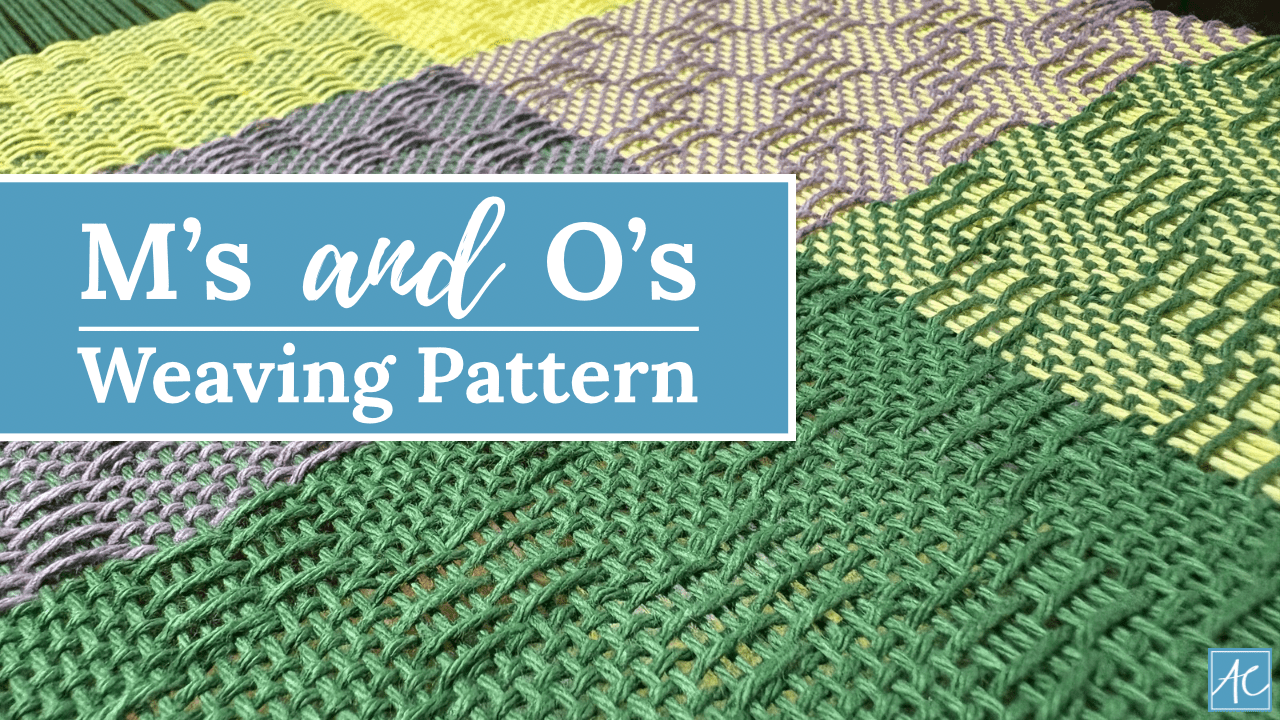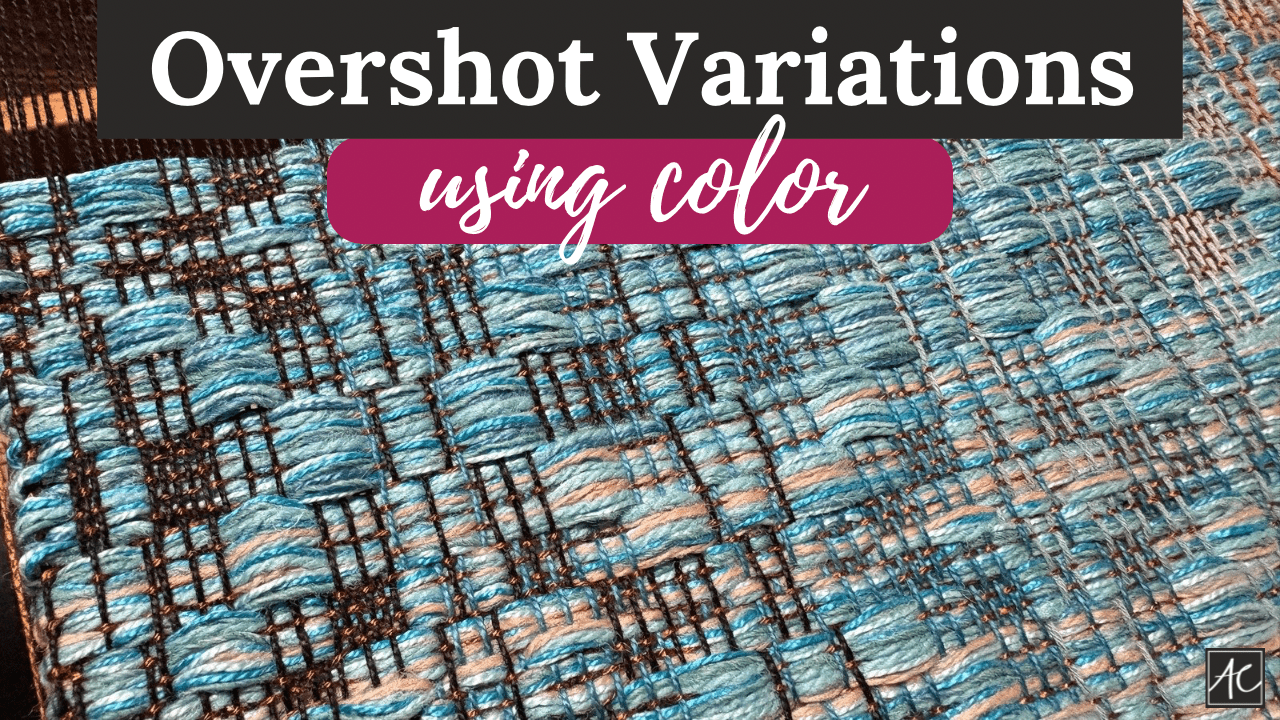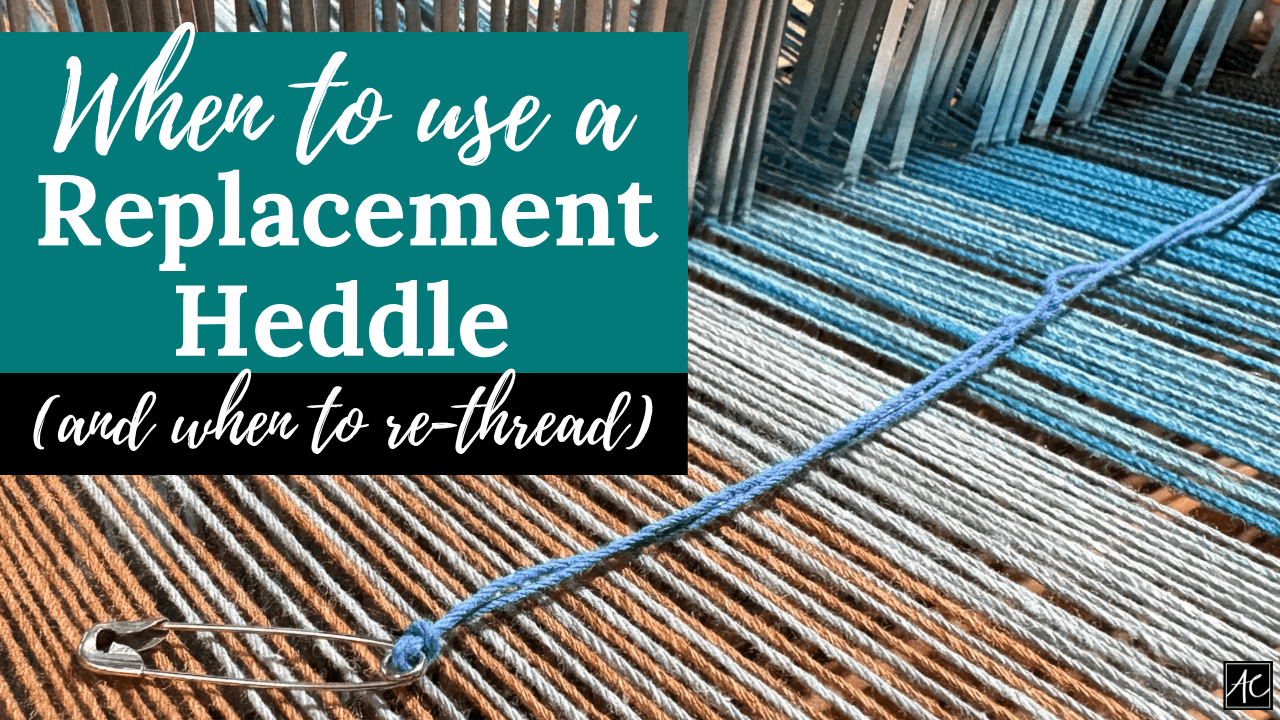So, here we are! The reed has been sleyed and I’m ready to finish dressing the loom! (Setting up the loom is called “dressing” the loom – just in case you are participating in some sort of random trivia contest later today!) The reed slides into a set of grooves in the beater bar and is locked in place. The twisted warp hangs off the front of the loom, so the shorter ends face the back where I can start threading heddles!
Heddles are tall, skinny metal pieces with an eye in the middle. They move along a set of tracks in each shaft of the loom. Basically, the way you choose to thread your heddles will help determine what pattern you can weave later!
The overshot pattern I chose for my coverlet is a tad more complicated than the usual plain weave! So, I really had to pay attention and do lots of counting!
(Typically, I take a million pictures of threading the heddles and for some reason this time around, I only took two! What is that about? Falling down on the job, clearly…)
Once the yarns are all assigned to their own heddle, it’s time to extend the back of the loom and begin winding on!
There’s a rod lashed onto the back beam that all the yarns are tied to. Hopefully, the bird’s eye picture, plus the profile shot will give you an idea of orientation!
When winding onto the loom, it’s really important to keep everyone as even as possible. The quickest way to create very unhappy weavers is to deal with uneven tension – tight yarns on one end and loose yarns on the other, or in the middle! Yuck! (Every weaver you know is cringing at the thought!) And winding on is the stage where that can happen! So, it’s critical to pay attention!
I own a fantastic video from Madelyn Van Der Hoogt and she recommends a method for winding on that I love! She separates the warp yarns into even groups (see the picture above) and then gives each group a yank, being sure to start in different places each pass. What I learned quickly is that when you pull the yarns left to right each time, my left side ends up longer – go figure! The other thing I learned is to use a stick or dowel instead of just your hands. Ah yes, the hated blisters…
Above is a picture of the side of the loom. On the left, you’ll see a lever at the top (this one rotates the front beam) and a pedal/lever at the bottom (this releases the brake). On the right side of the picture, you’ll see part of a crank (this rotates the back beam around). I wish I had a pointer for you – sometimes you need a few arrows to help you out!
So, as I’m winding everything on, I have one foot releasing the brake and one hand moving the crank, while I simultaneously add yardsticks to the back beam with the other hand. Yes, it’s a convoluted game of Weaving Twister! I highly recommend you don’t try this after having a few adult beverages…
The yarn’s all wound on and it’s time to tie the ends to the front! And then, you guessed it, it’s time to weave! WooHoo! I’ll start adding in some color next time! Talk to you soon…














